Effective Marketing: Attribution VS Incrementality | Mobio Group
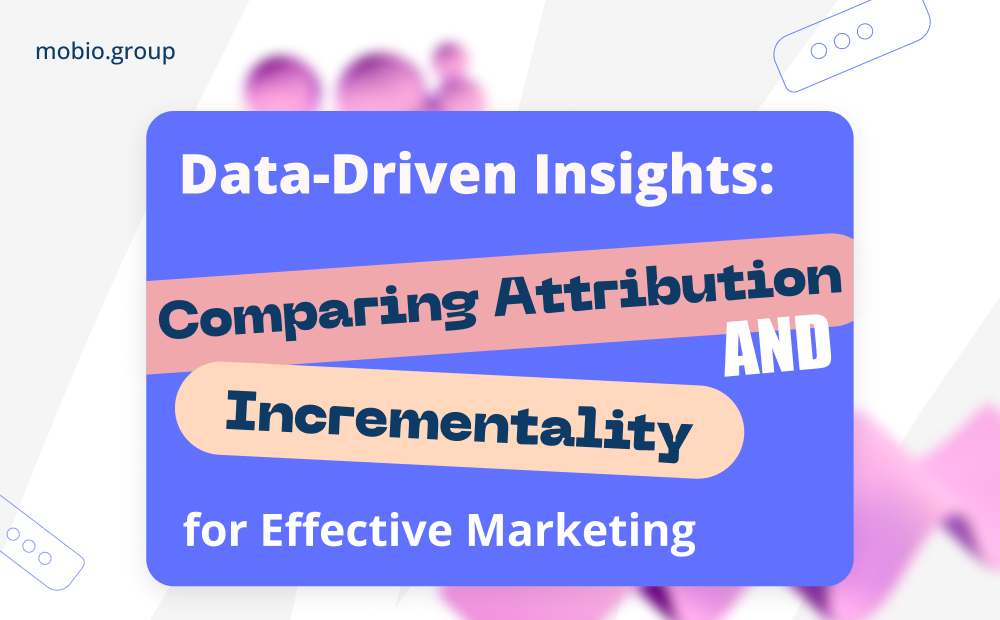
The pursuit of excellence and efficiency is a constant challenge, including in marketing. If we could capture every touch point, interaction, and step in the user journey, we would be in marketing heaven. With comprehensive knowledge at our disposal, we wouldn’t waste a single dollar, and we wouldn’t let any advertising go astray. Today we have two keys to measuring the impact of advertising — attribution and incrementality. Mobio Group will break down how these concepts correlate and interact to evaluate and analyze the effectiveness of advertising campaigns. This will be discussed in the era of the cookie-crisis and the abandonment of IDFA and GAID in this article.
People often mix together the concepts of attribution and incrementality, but they are not the same thing at all. Both advertising platforms and analytical services confirm this.
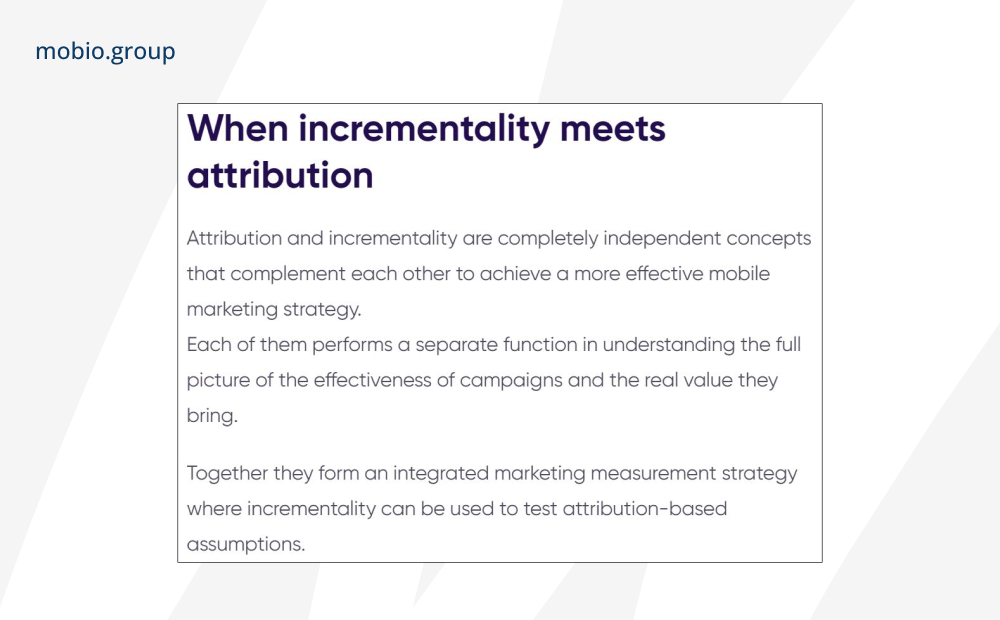
Understanding their key differences is crucial for navigating the intricacies of data analysis and optimizing campaign strategies.
The Concepts of Attribution and Incrementality
Attribution: Distribution of Merit
The focus is on the distribution of merit between different touchpoints in the customer journey. It seeks to understand which channels or tactics contributed to a particular conversion. In other words, attribution links user interactions with ads, such as impressions and clicks, to their buying behavior. For example, consider a customer journey where a person sees an ad on social media. They then search for a product on Google and finally make a purchase through an app. Attribution models will assign merit to each touchpoint based on predefined rules. These rules can include first or last interaction, most significant touchpoint, or weighted allocation.
However, we know that numerous factors such as brand value, WOM (word of mouth), offline campaigns, and the release of the new Brad Pitt movie influence purchase (download) decisions. This raises the issue of attributing all revenues solely to the advertising to which the user has responded. Unfortunately, attribution models cannot account for these additional factors, although they are an excellent tool for quick decision making.
Incrementality: Measurement of True Impact
While attribution focuses on the distribution of merit, incrementality delves deeper into the causal relationships of marketing activities. Its goal is to understand the incremental impact of specific marketing efforts. This is achieved by comparing the results of an organic and promotional campaign. (We discussed incrementality and how to measure it in more detail in our article). The process of measuring incrementality itself is quite lengthy and costly. It involves a computationally viable model that encompasses randomization, machine learning, cross-validation, scoring, and attribution of advertising causal effects. This is how complicated just one small step in the computation can look:
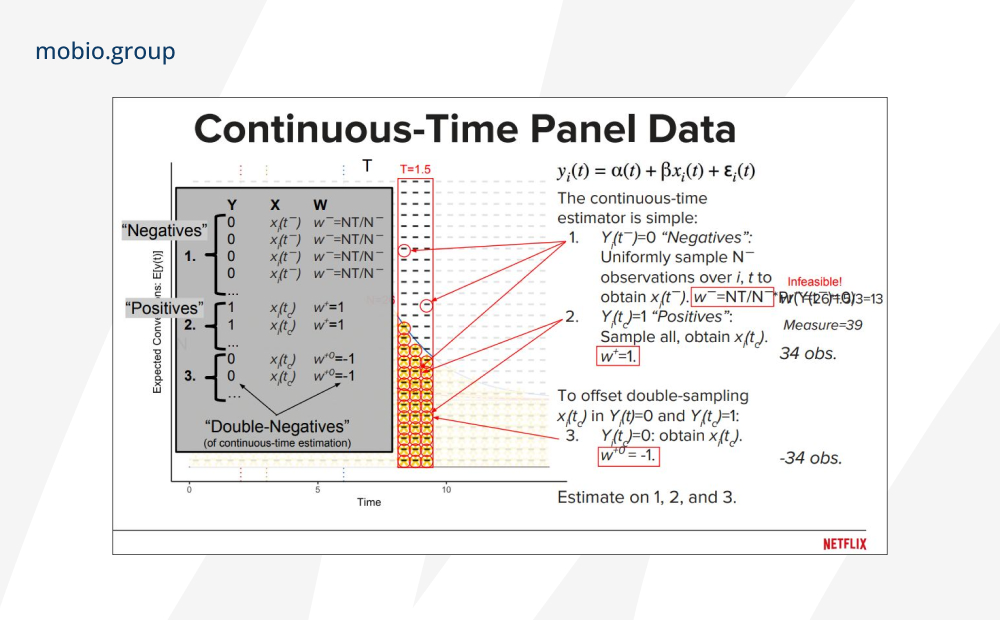
Relationship: Mutually Reinforcing Concepts
While attribution and incrementality approach measurement from different angles, they complement each other. Attribution helps identify the touchpoints that affect conversions. Incrementality helps measure the extent to which those touchpoints actually lead to additional results. For example, attribution can show that social media ads attribute a significant number of conversions. However, incrementality analysis allows you to find out whether these conversions are due to ads or would have happened without them, as well as the exact extent to which ads attracted users and whether this data matches the attribution numbers.
Pros and Cons of Attribution and Incrementalism
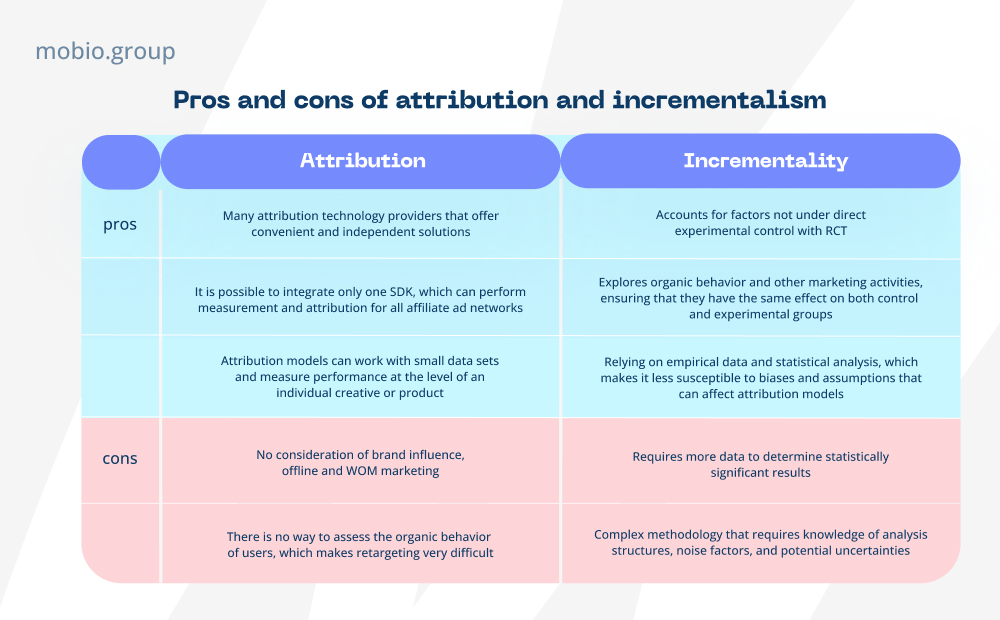
When the Need Arises for Incremental Tests
These tests can be time consuming and expensive, so it is best to focus on them in situations where the problem of incrementality becomes evident. In practice, you should test incrementality if there is a significant difference (more than 10-15%) between the target actions assigned to a channel and the actual number of target actions resulting from using it. What can provoke such a situation:
1. Strong brand presence: If you have an established brand with a known reputation built by previous advertising campaigns or growth cycles, organic brand awareness becomes significant, even if you gather it through paid channels.
2. Long transaction cycle: If your product goes a long way from brand familiarity to purchase, it’s more likely to run into attribution problems.
3. Changes in external factors: Changes in external factors, such as tracking problems due to IDFA or changes in browser cookies logic, can affect attribution measurement.
4. Lead Scamming (Fraud): If unscrupulous partners reselling your own organic branded traffic overwhelm your traffic, for example, this can generate skimming of advertising budgets.
5. Outdated attribution model: If you have a long-standing attribution model that has not adapted to changes in your product, engagement channels or business objectives, it may not accurately reflect actual data.
6. Channels that are difficult to measure: Some channels make it difficult to measure their effectiveness due to factors such as lack of explicit click-throughs, closing the funnel instead of generating demand, or generating demand without converting it into targeted actions.
7. Multiple advertising channels: The use of a large number of advertising channels can lead to overlapping audiences, which is the reason:
- Synergy (multiple channels promote conversions, give a joint effect of 1+1=3),
- Cannibalization (paid ads placed for search queries with the advertiser’s brand “eat” their own free traffic from the organic output),
- Overlap (actions of the same user are attributed to multiple channels).
Adjusting Attribution
Attribution models alone do not provide insight into the causal relationships between channels and target actions. They serve as benchmarks, and their effectiveness is influenced by dynamic factors such as channel competition, the impact of cross-channel interactions, budget changes and business objectives. Strong fluctuations (in addition to seasonality, economic conditions and other external factors) can affect the evaluation of the results of investment in product promotion:
⊚ in marketing
- pricing policy changes, new loyalty programs, promotional offers, etc.;
- advertising campaigns are introduced (performance, media, PR, podcast advertising, etc.);
- branding is strengthened;
- competitors’ advertising activity is intensifying;
- significant changes in user feedback are observed.
⊚ in product
- qualitative changes occur;
- competitors launch a similar product with significant quality improvement;
- technical failures of the application are observed (technical failures can level the effect of the advertising campaign).
Considering how many factors can affect the unit economics and, as a result, lead to errors in marketing policy and missed promotional opportunities, choosing the right attribution model, as close as possible to the incrementality of the product, becomes key and requires periodic revision. Verification of compliance involves several steps.
Step 1: Analysis of the discrepancy between the actual target actions (conversions) and the attributed ones.
Even if the attribution model was originally chosen correctly and conforms to your business model, in time with external factors, changes in the product itself or the introduction of the marketing mix the original model can lose relevance for a particular stage of promotion and reflect incorrect data. Therefore, at the first stage we assess whether certain marketing activities bring the expected additional results in proportion to the attribution data. If the difference is significant (more than 10-15%), go to the second stage.
Step 2: Evaluation of advertising campaigns with the help of tests.
Depending on the needs and complexity of the business, we conduct an incremental A/B test:
- independently — by benchmarking, disabling or abnormally scaling channels or running them in stages.
- with the help of advertising platforms or MMR.
Step 3. Analysis of the aggregate system.
When obtaining test results, it’s important to go beyond understanding the incremental nature of individual channels to assess the overall performance of the marketing ecosystem. You need to consider factors such as interactions between channels, the impact of budget allocation, and any potential external factors that could affect overall performance.
Step 4: Adjust the attribution model based on test results.
Adjust the attribution models based on the results of incremental testing (for example, reconfigure the retargeting campaign based on the behavior of organic users or focus on strengthening the referral channel).
Incrementality is becoming increasingly important as mobile marketing moves from deterministic attribution, where marketers had a high level of confidence in their measurements, to a world where there are fewer user-level signals. According to Netflix, the incremental approach is designed to address the challenges of measuring the impact of marketing:
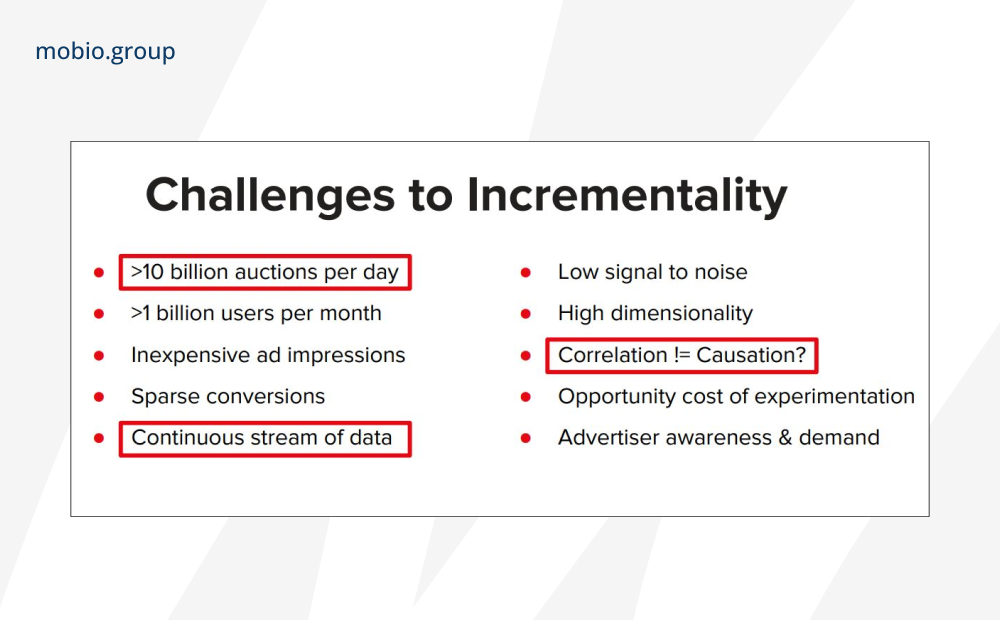
Admittedly, although incremental measurement provides really valuable information, it is still not a magic wand or a one-size-fits-all solution. Like any measurement approach, incrementality has its drawbacks and problems. However, when used in conjunction with attribution models, it can provide a more complete understanding of the impact of different channels, campaigns and creative strategies on overall business performance.
Our qualified Mobio Group team has the knowledge and experience to work with these measurement methodologies. Don’t solve the attribution and incrementality dilemma alone. Together we can find the right attribution model for your business, or a combination of both, and move your business toward significant growth.


